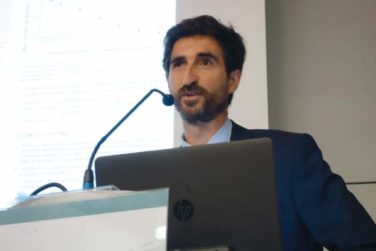FROM PLOS MEDICINE
Criteria recently proposed by the Centers for Medicare & Medicaid Services for the coverage of lung cancer screening using low-dose computed tomography may not be the most efficient way to screen patients.
The criteria adopted, based on recommendations from the U.S. Preventive Services Task Force (USPSTF) and results from the National Lung Screening Trial (NLST) could include some low-risk patients in the screening while at the same time miss certain high-risk patients who might benefit from low-dose CT screening, according to an analysis published online Dec. 2 in PLOS Medicine (2014 [ doi:10.1371/journal.pmed.1001764 ]). A key difference between CMS’s proposed criteria and the USPSTF guidelines is that CMS would only cover high-risk patients up to 74 years of age, while the USPSTF recommends covering up to 80 years of age.
“However, it has been shown that selecting individuals for screening based on accurate lung cancer risk prediction models is significantly more sensitive in detecting individuals who will be diagnosed with lung cancer and would save more lives than using the NLST criteria,” wrote Martin C. Tammemagi, Ph.D., of Brock University, St. Catharines, Ont., an epidemiologist on the NLST, and colleagues.
The authors recommend using the PLCOm2012 model, a “logistic regression lung cancer risk prediction model based on the 6-y incidence of lung cancer occurring in smokers in the control arm of the Prostate, Lung, Colorectal and Ovarian Cancer Screening Trial (PLCO).” The model uses four smoking variables (smoking intensity, smoking duration, quit time in former smokers, and current smoking status) and seven nonsmoking variables (age, race/ethnicity, socioeconomic circumstance estimated by education level, body mass index, personal history of cancer, chronic obstructive pulmonary disease, and family history of lung cancer).
“The PLCOm2012 model demonstrated high predictive performance, both discrimination and calibration, in external validation in PLCO intervention arm smokers,” the authors note.
Researchers found that applying the “PLCOm2012 model with a risk greater than or equal to 0.0151 threshold for selecting individuals for screening is statistically and clinically more efficient than the USPSTF criteria, because it leads to a smaller number of individuals being screened, identifies significantly more lung cancers, and has higher PPV [positive predictive value].”
This risk prediction model would have selected 8.8% fewer candidates for screening but detected 12.4% more lung cancers using the results from the PLCO and NLST trial to test the risk prediction model, “and because specificity is significantly improved, fewer false positive screens are expected,” the authors note.
And while no formal cost-effective analysis was done, the authors expect applying the model will do better than the current criteria, which already have been determined to be cost effective, because they select less people for screening and capture more positive results.
Researchers suggest that these criteria be implemented on an investigative basis in parallel with the USPSTF and if a patient meets the screening criteria in one or the other, the patient would get the screening.
“This approach is justifiable because it should be more cost-effective than using the USPSTF criteria alone,” they conclude.



